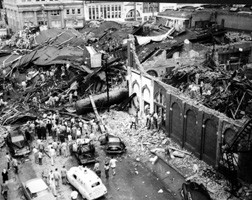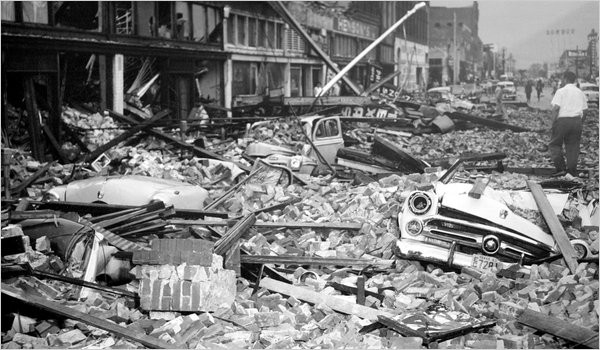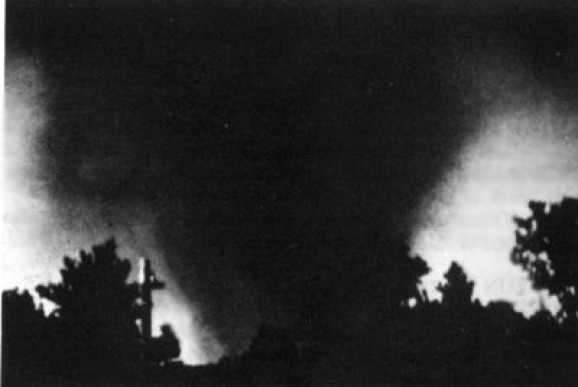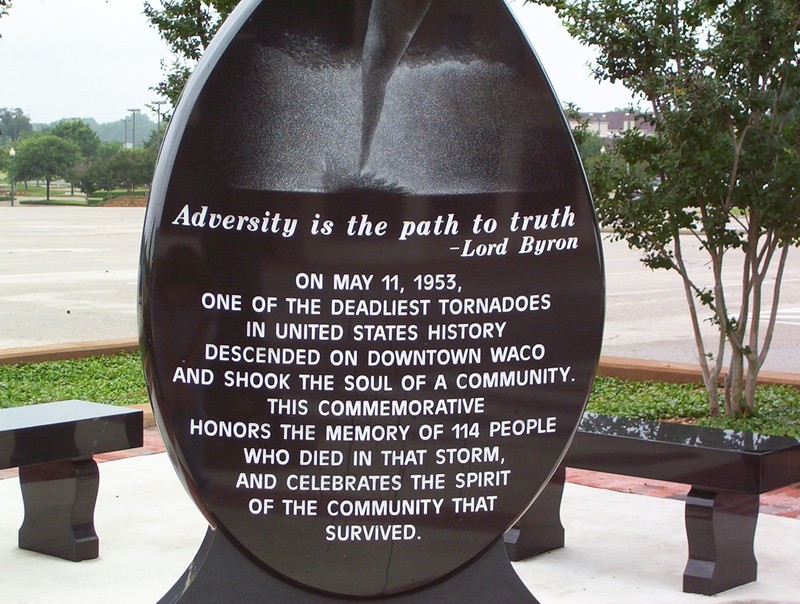Waco Tornado of 1953
Introduction
Text-to-speech Audio
Images
Photo shows downtown damage after the tornado hit

Devastation along Franklin Street

1953 tornado in Waco TX

Commemorative marker on the corner of 4th Street and Austin Avenue

Backstory and Context
Text-to-speech Audio
Timeline of the May 11th Tornado
Reports from the National Weather Service, especially of the tornadoes on May 9th and May 10th, went unheeded by Waco locals. Throughout the day, the weather progressively grew worse and a few tornados appeared in other parts of Central Texas.
Near 4:30 pm, however, a large and aggressive tornado touched down southwest of Waco. It was moving in a north-northeast direction. The sky had darkened and baseball-sized hail was falling from the sky.
Reports claimed that by 4:36 p.m., the F-5 tornado had become 1/3-mile wide and was producing winds up to 260 miles per hour. At this time, it was also tearing right through the heart of Waco. Eventually, the tornado dissipated a few miles northeast of the city.
The only buildings that could survive the 260 mph winds were those with steel frames, and therefore buildings such as the R.T. Dennis building collapsed in the storm (in this case, the building collapse killed 30 people). Personnel from James Connelly Air Force Base, local and state law enforcement, Baylor University students, and many others began rebuilding immediately after, and estimates show that about $51 million in damage transpired.
The Waco tornado is tied with the 1902 Goliad tornado as the deadliest in Texas history, and it is the 11th deadliest in US history.1
Inscription
One of the most disastrous tornadoes in Texas history swept through downtown Waco on the afternoon of May 11, 1953, killing 114 people, destroying 346 buildings and creating property damage in excess of $50 million. Some of the worst devastation occurred at this site, where 32 employees of the R.T. Dennis Furniture Company died when the building collapsed. Aid to the city came in the form of volunteer and military rescue forces and donations totaling over $9 million. The rescue and restoration efforts that followed reflected Waco's strong sense of pride and community spirit.2
